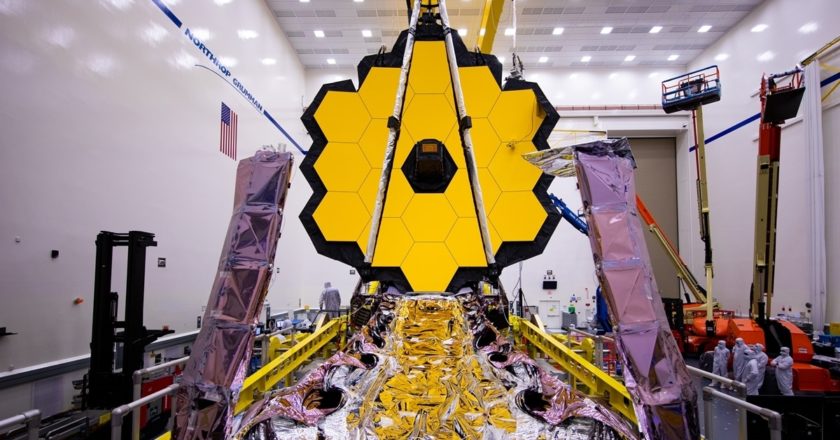On Dec. 25, 2021, the James Webb Space Telescope was launched in order to analyze the Big Bang and black holes.
The James Webb Space Telescope was launched from a spaceport near the Equator in Kourou, French Guiana. The stages of its deployment in space were documented from a camera on the rocket and aired through NASA. The telescope’s new and advanced technology, as well as the goals scientists seek to accomplish through it, set the device apart from older telescopes like the Hubble.
The telescope is designed with two panels that are lined with gold-plated hexagonal mirrors, which give the telescope its signature honeycomb look. The mirrors perform with 7x the amount of light-gathering capability of the Hubble telescope, allowing it to see further in space. The telescope functions without camera monitoring due to its unique structure. One side of the telescope deals with intense heat so the other can remain at an operational temperature. A typical camera system wouldn’t be able to work with the significantly different temperature zones.
Even then, the cameras would have added an unnecessary amount of extra weight and, as a result, more risk. Instead, the telescope uses a system of switches, sensors, and motors. The complexity of the design is shown in the ten new devices engineered specifically to increase the telescope’s sensitivity to light and ability to measure heat radiation.
Since its launch, the telescope has moved smoothly through each of its deployment phases. So far the telescope has been powered on and established contact with ground stations, proceeding to unfold each of its limbs mechanically, and position the plastic sheet made to protect its sensors from heat.
Exploring cosmic history all the way back to the Big Bang, as well as studying black holes and faraway planets orbiting other stars, the James Webb telescope is an exciting development in the exploration of space.
Source:

